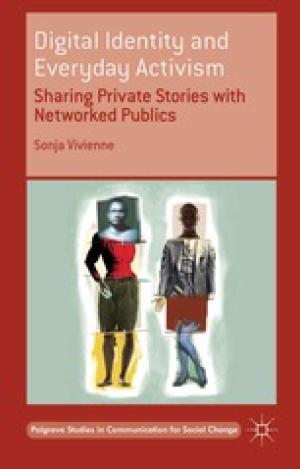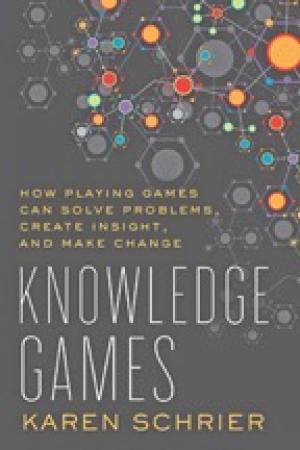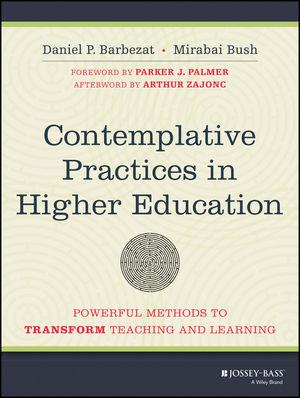Resources by Mary E. Hess

I have been a consultant for the Wabash Center for more than a decade now, and I still often wonder what I am supposed to be doing when I consult, and how I should be doing it. Supporting colleagues in the intimate and courageous act of opening up their teaching to other colleagues’ input is often an uncharted journey. I think it’s even more challenging in an era where the primary pandemic I worry about is the one having to do with discerning what is true and real, and what is not. I think you can talk about this in any number of ways—COVID-19, racial injustice, climate catastrophe—but at heart the question is how we navigate the complex and multiple realities we and our students are inhabiting. I have had the enormous privilege of walking alongside two gifted colleagues these past few months—Dr. Mitzi Smith and Dr. Dan Ulrich—as they took on the challenges of designing and leading a course together, where one of them was the expert and the other was the learner, all the while walking alongside their student learners. Drs. Smith and Ulrich are Second/New Testament scholars, teaching in two very different seminary contexts. Dr. Smith is an African American woman, and Dr. Ulrich is a white man. This last sentence is at the heart of the project they took on, within the Wabash Center’s grant program, to imagine and embody what it can mean to develop a pedagogically effective and ethically responsible trans‐contextual online intensive course. They set out to bring into focus African American and womanist approaches to sacred texts—both those of the Bible, and those of the lives of women and men whose struggles are part and parcel of having no permanent shelter. Dr. Smith was the formal teacher, Dr. Ulrich the formal learner. And I was a listener, a learner, and perhaps a cheerleader as they tried to walk this walk. I think I know a lot when it comes to designing learning in digital spaces—but much of what I know is not relevant when trauma is the essential ecology in which we are living. Here are things I learned: Teaching and learning are thoroughly relational, and this moment in time requires us to face that reality directly and intentionally—it is no longer possible to pretend that what we do is purely cognitive. It’s really difficult to be trained as an expert in your discipline, and from that training demonstrate being an active learner. Humility and openness are key to navigating this terrain, but they are rarely the skills or capacities we are rewarded for in our scholarship. Empathy, not sympathy, is essential in this work but the difference between these two abilities is not generally taught in higher education. Certainly our students find the distinctions very difficult to parse. Structural and systemic racism are so much a part of higher education that it takes a lot of effort simply to discern the “next right step” in resisting them. Teaching together needs to begin in relationship-building long before a syllabus is written, let alone implemented. There is a necessary balance to be found between the improvisational nature of teaching when you are doing it alone, and the shared work of collaborative pedagogical design. Institutional constraints will force certain problematic compromises to be made no matter how committed you are to justice. Here are questions I still have: What kind of authority is it necessary to have in a class? With a colleague? As a consultant? How do you say “I’m sorry” in a way that matters? What does it mean to be an “expert” in an academy so riddled with injustice that the very performance of “expertise” may be re-inscribing that injustice? What degree of transparency is important for students gaining a sense of the power dynamics embedded in specific academic disciplines, and when might it be better to obscure them? I am left with a profound gratitude that there are scholars in this world who are seeking to break down some of the power dynamics of the academy. I remain thoroughly committed to the search for a “pedagogically effective and ethically responsible trans‐contextual” way of teaching even if I’m still not sure what that looks like—at least this project has offered me a hopeful glimpse!

This small book is a brilliant example of grounded research that is thoroughly infused with theoretical insight and practical engagement. At first glance people looking for pedagogical wisdom might not be attracted by the title, but at the center of the book are questions of identity and everyday activism – topics that are vitally important in the midst of higher education contexts permeated with fears of “coddling students” and arguments over the value of “trigger warnings.” Vivienne is based at Flinders University of South Australia. This book draws on her background in media production and working with marginalized communities towards social change, and focuses on research she did with GLBTQ communities learning how to create in a specific form of digital storytelling: Digital stories are short (3-5 minutes) rich media autobiographical videos, combining personal photographs and /or artworks, narration, and music. They are traditionally created in a workshop context that takes place over 3-4 days and includes a story circle, technical instruction, and celebratory screening for fellow storytellers and invited guests. (3) Because persons within GLBTQ communities must constantly negotiate how they represent themselves, when and how they claim specific forms of identity, and in what ways they make these claims publicly, digital storytelling offered a compelling medium for a research project interested in exploring the challenges of sharing private stories with networked publics. The book is full of descriptions of how these stories emerged, with links to specific videos referenced available online. Vivienne’s work is both participatory and activist in methodology, drawing on the theoretical work of scholars such as Benhabib, Butler, Young, boyd, Jenkins, Bahktin, and Foucault. She ensures that the complexity of these theoretical interventions are made vividly accessible by using them to attend to the conundrums of claiming identity in the midst of highly contested spaces. She highlights the capacity of digital storytelling for reaching across various forms of difference: bridge building is reflected in the capacity to negotiate one’s position as a part of or apart from networked publics – including familiar, intimate, counter, and unknown. Digital storytelling creates opportunities to ‘bring things up,’ to broach difficult discussions ‘out in the open.’ Ownership of one’s position in society (as represented in a digital story) is reflected in the capacity to receive and give affirmation. Further, public expression of marginalized voices opens space for others to speak as they also negotiate how and where they fit in the world. As a medium that facilitates speaking across difference and bridge building, digital storytelling evokes the profound significance of participatory media as a widespread global phenomenon. (196-197) Along the way she defines and describes digital storytelling, everyday activism, erosive social change, and a concept she names “Intimate Citizenship 3.0,” as well as exploring issues of identity, nominalization, authenticity, coherence, and congruence in such media. Her research concludes with four specific findings: Institutions and facilitators can be transparent in actively acknowledging their discursive mediating influence upon the construction of individual and collective identities. [A]wareness of networked identity work provides an opportunity to sculpt congruent rather than coherent narratives and this labour can have both personal value and constitutive cultural value. [A]ctive consideration of distribution of private stories amplifies personal and social benefits, especially as a tool for everyday activism. [I]nitiatives benefit from reflective analysis of cross-disciplinary community engagement strategies, social movement theory, and strategic listening across difference. (205-206) While this book does not directly highlight pedagogies for religious studies or theology classrooms, it is full of stories in which workshop participants confront and contest religious claims their families, their communities, and broader “imagined” publics are making. By offering compelling descriptions of ways to engage such meaning-making that invite people into dialogue across various divides, this book embodies transformative adult learning and offers a rich collection of pragmatic advice for nurturing such learning.

The first section of this book is devoted to working through the complex definition of what constitutes a “knowledge game,” and more specifically, what does not. Schrier’s book is a substantial literature review of the vast – and rapidly growing – field of games that contribute to knowledge production. “Knowledge games,” by her definition, are “the set of practices, contexts, designs, and relationships that emerge from and around those games with a goal or sub-goal of generating new knowledge about humanity, society, the universe, and any previously unknown phenomena” (26). In contrast to games such as “citizen science games,“ “crowd games,” “collective games,” “participatory games,” and “human games,” Schrier takes great care to delineate that she is exploring only those games which seek to produce knowledge, solve authentic, applicable problems, and/or “generate new ideas and possibilities for real world change” (25). A few of the games she examines include those she designates as “cooperative contribution games” (Happy Moths, Citizen Sort, Reverse the Odds), “analysis distribution games” (VerbCorner, Who Is the Most Famous?, IgnoreThat!, Apetopia), “algorithm construction games,” (The Restaurant Game, Foldit, EteRNA, The SUDAN Game, Which English?), and “adaptive-predictive games” (SchoolLife), although she notes this final category is not yet robust, being instead “the next frontier of knowledge games” (30-31). The second section of Schrier’s book tackles the challenging question of “why” knowledge games. That is, in what ways might knowledge games contribute to problem-solving? What kinds of motivation to play exist within these games, which are often produced very cheaply and without access to the million dollar production budgets of games in the entertainment world? Further, to what degree is social interaction nurtured or constricted by such games? Schrier acknowledges that these are complicated questions that require deeply contextual responses. She does not really offer answers, instead choosing to sketch out a brief summary of relevant research findings that point to principles related to motivation and games. The final section of this book turns towards “perspectives, potentials, and pitfalls” to be found in the midst of knowledge games. While Schrier draws on significant theorists and wider literatures here (for example, Lave and Wenger, Jenkins, Benkler, Gee) she only lightly engages issues of ethics, and leaves entirely untouched pragmatic questions of pedagogy. This book is not likely to be of much interest to people teaching in the fields of religion or theology, with the limited exceptions of those for whom shared knowledge creation in the midst of significant amounts of data are of pressing concern, or those for whom games are a specific focus. In that case Schrier’s appendices, where she lists categories of knowledge games along with examples, and where she enumerates a significant set of design principles, will prove useful. Aside from those small exceptions, this book is not likely to be pertinent to the readers of Teaching Theology and Religion.

We live and teach in a world of massive distraction. It is difficult to find spaces or times in which people are simply still, let alone inhabit silence. College students claim they are effective “multi-taskers” but more and more research is suggesting that multitasking is not a route to deep learning, and can even begin to shape attention practices in detrimental ways. What can we do? One generative inquiry into these challenges comes from the field of contemplative practice. What is contemplative practice? The authors of this book define it broadly, noting that these practices certainly include meditation, but not all are meditative in the traditional sense. . . . They all place the student in the center of his or her learning so that the student can connect his or her inner world to the outer world. Through this connection, teaching and learning is transformed into something personally meaningful yet connected to the world. (6) Bookended by a foreword written by Parker Palmer, and an afterword by Arthur Zajonc, this book is a much needed and pragmatic resource for anyone teaching in a higher education context. It is based on nearly twenty years of research into contemplative practices in higher education, including the work of 152 fellows who worked on classroom experiments in more than one hundred colleges and universities. Barbezat and Bush provide a concise but thorough overview of this research, while keeping their focus on teaching and learning practice. The book is divided into two sections, the first concentrating on theoretical and pedagogical background, the second a guide to contemplative practices in higher education classrooms. Issues such as neuroplasticity, the challenges of reflecting on first-person experience, and a range of theoretical resources for introducing and developing meditation and introspection are explored in the first section. In the second section the authors draw from a vast array of pedagogical experiments in a diverse assortment of disciplines to resource specific exercises in mindful reading, writing, listening, movement, and action. These resources include specific writing prompts, examples of syllabi, and a rich collection of bibliographic entries for further study. The authors also address directly the challenge of the religious studies classroom: “The most problematic place in the academy to introduce contemplative practices has been religion departments, where the concern has been that a professor who practices the religion he or she is teaching would not be sufficiently objective. Teaching contemplative practices to students raises a further concern: proselytizing” (105). Here the authors are quick to point out that contemplative practices of this sort are about “students discover[ing] their own internal reactions without having to adopt any ideology or specific belief” (6). But is this really an appropriate response? My primary critique of this significant book is to ask what it means to invite students into a “technology” of embodied practice without at the same time inviting them to inhabit the beliefs within which that technology arose. Are we really willing to remove context in this way? Or is the contextual collapse we are already living within (cf. Michael Wesch) necessarily confronted by the intentionally attentive work of contemplation? Can practices of meditation and introspection so ground our knowing as to build the kind of insight, compassion, and systemic analysis necessary for living in a deeply present way in our postmodern world? There are likely no clear or single answers to these epistemological conundrums. As one of the teachers whose work is explored in the book, Mary Rose O’Reilly, writes: “I learned that the single most important thing a contemplatively centered classroom teaches the teacher is not a pedagogical recipe but pedagogical flexibility” (188). For my part, I am hopeful and energized by the various experiments with which these innovative educators are engaged. Given that education must, at heart, “create environments for students to inquire and challenge themselves about the meaning of their lives and the lives of others” (200), this book offers both rich reflection and pragmatic resources for doing so.